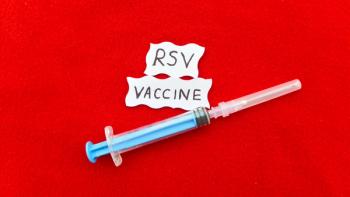Trump Signs His Signature Legislation (Thus Far)
On July 4, 2025, President Donald J. Trump signed the One Big Beautiful Bill Act (OBBBA). Among the nearly 900 pages of legislation are changes to health care coverage and financing that may have far-ranging effects on community and health system outpatient pharmacies.1 As criticism of “middlemen” and the supply chain accelerates, pieces of this legislation may act as a coenzyme to transparency, pharmacy benefit manager (PBM) reform, and favored-nation efforts. Alongside those policy streams are marketplace evolutions that might also get a shot in the arm.
An Estimated 11.8 Million People to Lose the Most Generous Category of Prescription Benefit(s)
Medicaid provides arguably the most generous prescription benefit of any category or type of insurance to the most fiscally vulnerable population(s). Most enrollees can utilize great coverage through Medicaid with low or no co-payments and regulatory-mandated coverage of most of the priciest drugs. However, some could end up with more limited or no coverage at all, depending on eligibility rules and individual life circumstances, but heavily impacted by policy. OBBBA’s emphasis on redeterminations, work requirements, and squeezing the states’ substantial federal contributions to state Medicaid programs will no doubt have the net effect of downward pressure on enrollment. It is estimated that more than 11 million people could lose Medicaid coverage over time.2 At least 1 national insurer with deep exposure in managed Medicaid plans had its stock price drop 40% before the bill’s passage due to the effects of excess spending on medical claims from the “COVID-19 hangover” and a drop in exchange plan enrollment alongside prognostications of the potential passage of OBBBA.2
Another 5.1 Million Likely to Leave Exchange Plans
Add in the estimated 5 million who will elect not to participate in Affordable Care Act exchanges due to decreased subsidies causing increased premiums. That 5 million does not include the broader effect of rising premiums for non-Medicaid plans as the balloon gets squeezed, resulting in upward premium pressures on all other insurance categories. As premiums rise for the financially vulnerable, enrollments will fall even further. Meanwhile, health systems in rural and low-income, high-poverty zip codes are going to feel exceptional financial pain unless the state itself bails the system out. Will we enter a disruptive phase in health care financing and administration, the likes of which may be even greater than the resulting effects of the Affordable Care Act (so-called Obamacare)?
About the Author
Troy Trygstad, PharmD, PhD, MBA, is the executive director of CPESN USA, a clinically integrated network of more than 3500 participating pharmacies. He received his PharmD and MBA degrees from Drake University and a PhD in pharmaceutical outcomes and policy from the University of North Carolina. He has recently served on the board of directors for the Pharmacy Quality Alliance and the American Pharmacists Association Foundation. He also proudly practiced in community pharmacies across North Carolina for 17 years.
The Net Effect for Manufacturers Is Mixed
- Fewer customers: Less coverage means fewer people filling the first prescription and dropping off more quickly from refills. Overall, this means a shrinkage in the customer pool for the most profitable market in the world (the US).
- Fewer Medicaid rebates: Fewer people eligible for Medicaid means fewer prescriptions are eligible for Medicaid coverage, meaning fewer prescription fills are subject to the Medicaid Rebate Program. This will provide some relief and mitigation against a growing “list-to-net” spread that represents the difference between the dollars manufacturers generate for getting another unit into the market and the amount they get to keep after rebates and concessions.
- More cash pay: Some proportion of the prescription fills lost due to loss or reductions in coverage will be preserved through conversion to cash pay or 100% out-of-pocket payments from patients who still see the benefit of the drug product against the full cost.
- More direct purchase eligible: Manufacturers will no doubt court patients coming off Medicaid and exchange plans for direct-from-the-manufacturer programs designed for patients who do not carry insurance but would not qualify for a patient assistance program. In July 2025, manufacturers announced another drug entry into this strategy with Eliquis (apixaban; Bristol Myers Squibb, Pfizer) to be sold directly to patients (meaning no PBM) at a 40% discount.3 This strategy aligns with a decades-long strategy of price discrimination based on ability to pay as a cornerstone of profitability, with rebates and patient assistance programs being the mechanisms to accomplish this go-to-market pricing strategy. You can now add direct-to-patient programs to that arsenal.
Expect More Cash Market Plays From Community Pharmacies
It would be prudent for community pharmacies to prepare for and court uninsured patients as they come off coverage in an accelerated manner due to the downstream effects of OBBBA. Generic fills will likely be the dominant play, with branded dispensing having a continued downward trajectory on margin, if not outright loss, for most branded prescription fills. Updating staff on assistance programs may also be on the docket if the pharmacy can clear any margin on branded medications.
Expect More Conversations Between Pharmacy Providers and Brand Manufacturers
The growth of direct-from-manufacturer (consumer-patient) purchase programs alongside the continued degradation of branded reimbursement will accelerate the number of community pharmacies courting, if not begging, manufacturers to include them in their direct purchase programs. This will cause great conflict and consternation among all the actors in the supply chain–coverage–rebate–reimbursement complex.
Expect Some Effort to Stem Growth of the “End Around(s)”
For PBMs, transparency and alternative access are kryptonite to the perceived (and potential actual) benefit of pharmacy benefits. Growth of cash pay and direct purchase erodes the PBM’s ability to control the means of production (an economic term for market control of providers). In other words, once you start getting calories from somewhere besides the gastronomy (G) tube that has fed you for decades, the relationship with your G tube changes dramatically.
The future role of wholesalers is also being questioned. There was a time when pharmacies procured most of their inventory directly from manufacturers. This does not make much sense (currently) for generics, where the drug cost-to-shipping ratio is low, with direct shipping being a large proportion of the cost. However, for branded drugs, the drug cost-to-shipping direct ratio is insignificant when a 30-day supply is upwards of $1000. For PBMs and wholesalers, these programs and market evolutions represent end-arounds that are gaining increasing public and policy popularity.
Expect 340B-Eligible Entities to Triple Down on Prescription Capture
Health systems that serve predominantly Medicaid patients are the clear losers in OBBBA. Uncompensated care will grow precipitously, and patient encounters (demand for services) will fall along with it. These are the same provider groups and systems that have the most 340B-eligible prescribers. Expect 340B entities to do everything they can to keep those prescriptions in-house.
One Policy Footnote: The Dark Horse Section of OBBBA That Few Are Talking About
Policy analysts are early into the interpretation and effects of a less-publicized part of OBBBA, which allows the cost of direct primary care (DPC) to be reimbursed through health savings accounts. This long-sought policy change by the primary care community should supercharge the growth of DPC, which typically provides unlimited (or nearly unlimited) access to primary care and basic laboratory tests for a fixed monthly subscription cost—no insurance claims or the overhead and headache that go with them. Interestingly, prescription services are carved out, potentially preventing DPC practices from dispensing medications as part of the subscription fee and increasing opportunities for pharmacies to colocate or otherwise participate in a more integrated way with the direct care/subscription pay movement.
REFERENCES
1. What health care provisions of the One Big Beautiful Bill Act mean for states. National Academy for State Health Policy. July 8, 2025. Accessed July 21, 2025. https://nashp.org/what-health-care-provisions-of-the-one-big-beautiful-bill-act-mean-for-states/
2. Graham J. The big, beautiful health care squeeze is here: what that means for your coverage. Investor’s Business Daily. July 18, 2025. Accessed July 21, 2025. https://www.investors.com/news/big-beautiful-bill-trump-budget-health-care-coverage/
3. Constantino AK. Bristol Myers Squibb, Pfizer to sell blockbuster blood thinner Eliquis at 40% discount. CNBC. July 17, 2025. Accessed July 21, 2025. https://www.cnbc.com/2025/07/17/bristol-myers-squibb-pfizer-to-sell-eliquis-at-40percent-discount.html





















































































































































































































